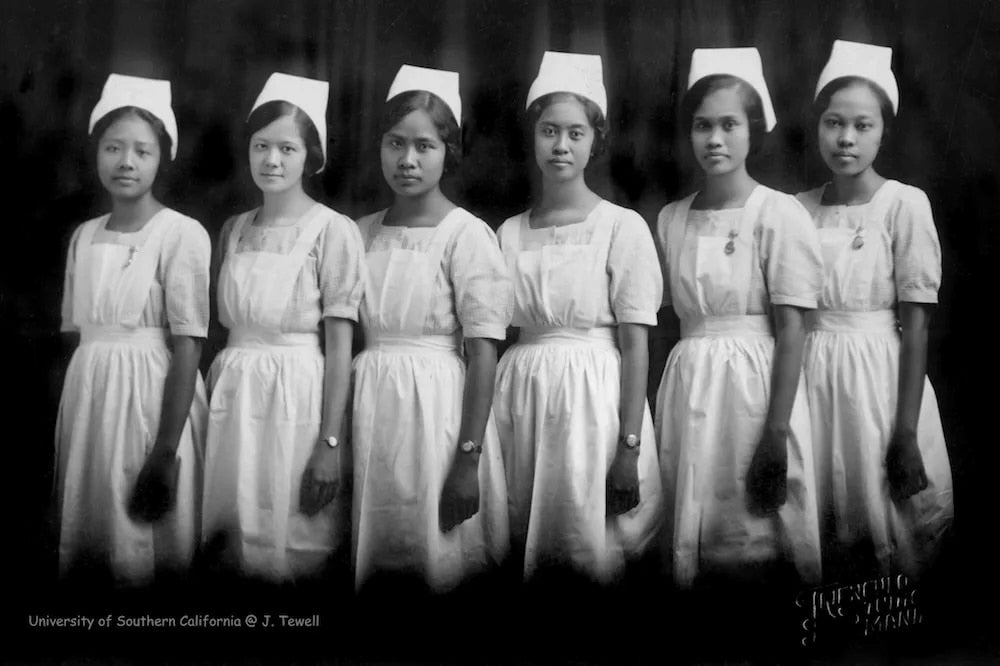ASIAN AMERICAN COMMUNITIES
Filipinx American Histories

00:00

Can everyday objects tell us something important about Filipinx American history or lives?
Chapter objectives
- Learn the history of labor migration from the Philippines to places in the diaspora, as well as how Filipino Americans participated in and led social movements.
- Understand the different modes of resistance (everyday, armed, and nonviolent) employed by Filipino Americans.
- Explore how museum objects can be used as strands to begin weaving complex historical narratives.
This chapter provides an overview of Filipino American histories, linking the development of global capitalism’s development to the labor migration of Filipinos to the United States and Hawaiʻi, and the creation of Filipino American identities. Throughout all these stories are the traditions of resistance and solidarity where Filipinos led, organized, and participated in social movements. This chapter uses museum artifacts from the Smithsonian as primary sources to help tell those stories and encourages learners to think not only about the practice of collecting artifacts but also interpreting them.
Modules in this chapter
If You Want to Know What We Are
Telling Stories with Objects
Filipino Homemade Rifle
First Filipino Infantry Regiment Insignia
Agricultural Workers Organizing Committee (AWOC) and National Farm Workers Association (NFWA) Pin
Nurse’s Cap
Ruby Ibarra’s Jacket
If You Want to Know What We Are
Telling Stories with Objects
Filipino Homemade Rifle
First Filipino Infantry Regiment Insignia
Agricultural Workers Organizing Committee (AWOC) and National Farm Workers Association (NFWA) Pin
Nurse’s Cap
Ruby Ibarra’s Jacket
Chapter Sources
“1st Filipino Infantry,” Camp Roberts Trainer (newsletter), volume 2, number 3, n.d.
Adler, Anthony, “From the Pacific to the Patent Office: The US Exploring Expedition and the origins of America’s first national museum,” Journal of the History of Collections 23.1 (2011): 49-74.
Baldoz, Rick, The Third Asiatic Invasion: Empire and Migration in Filipino America, 1898-1946 (New York: New York University Press, 2011).
Barraclough, Geoffrey, An Introduction to Contemporary History (London: C. A. Watts, 1964).
Barrett, Kay Ulanday, Karen Buenavista Hanna, and Anang Palomar. “In Defense of the X: Centering Queer, Trans, and Non-Binary Pilipina/x/os, Queer Vernacular, and the Politics of Naming.” Alon: Journal for Filipinx American and Diasporic Studies 1, no. 2 (2021): 125-147. https://doi.org/10.5070/LN41253177
Barrientos, Darleene. “A Different Battle: Over 50 Years Ago, the US Government Promised Them Equity,” Daily Titan, November 14, 2001, 4-5.
Barry, Lynda. One! Hundred! Demons! (Seattle: Sasquatch Books, 2002).
Basch, Linda, Nina Glick Schiller, and Cristina Szanton Blanc. Nations Unbound: Transnational Projects, Postcolonial Predicaments, and Deterritorialized Nation-States (London: Routledge, 1994).
Beveridge, Alfred J. “Our Philippine Policy,” Congressional Record, United States Senate, January 9, 1900, pp. 704-711.
Bontoc Eulogy, directed by Marlon Fuentes and Bridget Yearian, Corporation for Public Broadcasting and National Asian American Telecommunications Association, 1995.







